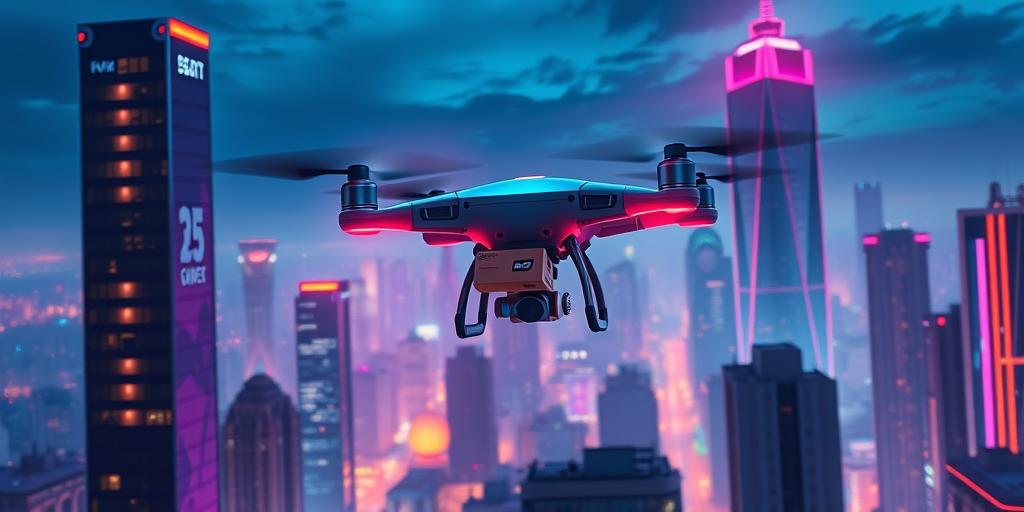Have you ever wondered how your online order makes its way from a warehouse halfway across the world to your doorstep in a matter of days? The magic behind this incredible feat of modern logistics isn’t magic at all – it’s the Internet of Things (IoT). This revolutionary technology is transforming the logistics and supply chain industries, optimizing processes, boosting efficiency, and creating a whole new level of transparency. Prepare to be amazed as we delve into the fascinating ways IoT is reshaping how goods are moved around the globe!
Real-time Tracking and Visibility: The GPS Advantage
One of the most impactful ways IoT is revolutionizing logistics is through real-time tracking and visibility. Imagine this: you’re eagerly awaiting a crucial shipment, and with a simple app, you can follow its journey from origin to destination. This real-time tracking isn’t some futuristic fantasy; it’s the reality made possible by IoT-enabled devices like GPS trackers affixed to containers and shipments. This level of transparency gives businesses unprecedented control and allows them to predict and mitigate potential problems, such as delays or theft, proactively, which is especially important for businesses focusing on just-in-time inventory management strategies and cold chain logistics, ensuring their temperature-sensitive products arrive in perfect condition. For example, imagine a pharmaceutical company using IoT sensors to monitor the temperature of their vaccines during transport. This ensures that vaccines arrive at their destination in perfect condition and increases customer trust and satisfaction.
Minimizing Delays and Losses
By knowing the exact location of goods at all times, businesses can react swiftly to unexpected delays. Road closures, traffic congestion, or even unforeseen weather events – nothing is hidden anymore. This predictive power significantly reduces the risk of delays and losses, which translates directly to cost savings and improved customer satisfaction. IoT-powered route optimization systems analyze real-time traffic data and suggest the most efficient routes to ensure timely and cost-effective delivery, minimizing delivery time uncertainty and fuel costs. Real-time data helps to avoid unnecessary delays and ensures on-time delivery, enhancing the company’s reputation and customer loyalty.
Enhanced Inventory Management: Knowing What You Have and Where It Is
IoT sensors placed within warehouses and storage facilities provide real-time inventory data, eliminating the need for manual stock checks. This data-driven approach makes inventory management significantly more efficient. Businesses gain a comprehensive understanding of their stock levels, which prevents stockouts and overstocking – a huge win for profitability and space optimization. Furthermore, this technology streamlines warehouse operations, reduces human error, and ensures that the right products are always available in the right place at the right time. Imagine an e-commerce company leveraging IoT sensors to monitor inventory levels in real time and automatically order more products when supplies are low. Such a system will ensure no customer orders are delayed because of inventory issues.
Reducing Waste and Optimizing Space
Through smart sensors and connected devices, businesses gain a precise view of their inventory, including expiration dates and product condition. This minimizes waste due to spoilage or obsolescence. Moreover, optimizing storage space through informed decision-making leads to significant cost savings. IoT-powered systems can also provide insights into warehouse layout and processes, allowing companies to restructure storage and work patterns to maximize efficiency.
Improved Supply Chain Security and Risk Management: Protecting Your Assets
The use of IoT devices extends far beyond simply tracking the location of goods. IoT technology can significantly enhance supply chain security by detecting and deterring theft or tampering. Smart sensors, coupled with advanced analytics, can flag suspicious activity, immediately alerting relevant parties to take appropriate action. This proactive approach dramatically reduces the risk of loss or damage to valuable goods. For instance, a logistics company using IoT-enabled sensors to detect unauthorized entry or tampering of containers can prevent cargo theft and improve the security of their products.
Data-Driven Security Measures
Data collected by IoT sensors can be analyzed to identify patterns and trends related to security breaches. This insight enables companies to anticipate and prevent future incidents. By proactively addressing security vulnerabilities, businesses build a resilient and secure supply chain, significantly reducing the risk of costly disruptions. Such proactive measures save a company from various security breaches, reducing the risk of financial losses and reputation damage.
Smarter Transportation and Delivery: Automating the Process
IoT is also revolutionizing the transportation and delivery aspects of logistics. Smart trucks and autonomous vehicles are becoming increasingly common, leveraging sensors and GPS data to optimize routes and schedules, enhancing efficiency and fuel economy. This technology also allows for more precise delivery scheduling, enhancing customer satisfaction and reducing delivery times. Automation is also extending to aspects like autonomous delivery drones and robots, which are already making waves in last-mile delivery. Smart trucks equipped with IoT sensors automatically monitor vehicle performance, reducing maintenance costs and downtime. This also reduces the risk of breakdowns or accidents, leading to a more efficient and reliable supply chain.
Autonomous Delivery and its Impact
The rise of autonomous delivery methods is one of the most exciting developments in the IoT-enabled supply chain. Drones and autonomous vehicles can significantly reduce delivery times, particularly in remote areas or for time-sensitive deliveries. Autonomous delivery also improves efficiency and lowers labor costs, while reducing the environmental impact by optimizing routes and reducing fuel consumption.
The implementation of IoT in logistics and supply chain management is revolutionizing industries worldwide. The level of visibility and control it offers is unparalleled, leading to improved efficiency, cost savings, and increased security. Don’t get left behind! Start exploring the potential of IoT to transform your own operations today!




